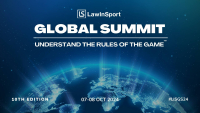Comparing how image rights laws apply to sport in the US, UK and Europe

The interaction between the rights to privacy and publicity (image rights) on the one hand, and free speech and freedom of the press on the other, is a complex issue that differs across jurisdictions. A number of recent cases have helped clarify key aspects of the content and extent of such rights, and where the line is drawn between them.1
This article compares developments in the U.S., the U.K., and Europe, to help clarify the current position for athletes.
The U.S. – Right of Publicity
The right of publicity purports to protect against uncompensated commercial exploitation of a person (such as an athlete’s) likeness or identity. Every person, celebrity or non-celebrity, has a right of publicity – which in short, is the right to own, protect and commercially exploit one's identity.
The protection afforded to the right of publicity in the United States stems from, and is intertwined with, the right of privacy.
The term "right of publicity" was coined by Judge Jerome Frank in 1953 in Haelan Laboratories, Inc. v. Topps Chewing Gum, Inc.2, which for the first time affirmed that individuals (in this case, Major League Baseball players) possess a property right in their own images.
Before Haelan, the right of privacy represented the means of protection for individuals against the unauthorized use of their likeness for commercial purposes. In Haelan, Judge Frank went beyond the action in tort based on the privacy right and extended the right of privacy (the right to be left alone). Judge Frank included a right of publicity (the right to be public) with a view to protecting against commercial misappropriation and preventing the unjust benefiting of others from a person’s likeness. In As Judge Frank explained:
"For it is common knowledge that many prominent persons (especially actors and ball-players), far from having their feelings bruised through public exposure of their likenesses, would feel sorely deprived if they no longer received money for authorizing advertisements, popularizing their countenances, displayed in newspapers, magazines, busses, trains and subways. This right of publicity would usually yield them no money unless it could be made the subject of an exclusive grant which barred any other advertiser from using their pictures."
The right of publicity is limited under U.S. law by the First Amendment, which establishes and protects the freedom of expression as an essential quality "intrinsic to individual liberty and dignity and instrumental in society’s search for truth".3
As the U.S. Court of Appeals, Seventh Circuit effectively pointed out in Jordan v. Jewel Food Stores, "there is no judicial consensus" on the interaction between right of publicity and right of free speech.4 The extent to which the right of publicity is recognized in the U.S. is determined state by state, not at federal level. Only about half of the states, including California and New York, have distinctly recognized the right of publicity either on a statutory basis or by way of common law.
The 'Transformative Use’ Test
With respect to the safeguarding of image rights belonging to athletes and celebrities, interesting recent cases5 have arisen from putative class actions. These actions were brought by a number of current and former NCAA6 Division I football and basketball players against the creator and developer of the video game 'Madden NFL', Electronic Arts, Inc. (‘EA’). EA's video game featured players having the same field or court position as those of the claimants, as well as a physical likeness (e.g. height, weight, bald head, skin tone, jersey number) resembling that of the claimants.7
The Courts, therefore, had to resolve the tension between First Amendment rights and the right of publicity. While the rulings recognized that, in principle, works such as video games are protected under the First Amendment, EA’s freedom of expression must be balanced against the players' right to make commercial use of their celebrity.
As stated in Hart v. Electronic Arts, Inc. , "the protection afforded to games can be limited in situations where the right of free expression necessarily conflicts with other protected rights". In doing so, courts have applied the so-called "transformative use test", which was developed by the Supreme Court of California in Comedy III Productions, Inc. v. Gary Saderup, Inc..8
Under the "transformative use test", the judge examines "whether the product containing a celebrity’s likeness is so transformed that it has become primarily the defendant’s own expression rather than the celebrity’s likeness". In all the civil actions in concern, the courts ultimately found right of publicity violations and rejected EA’s contention that the use of the player’s physical characteristics was, as a matter of law, a "transformative use" protected by First Amendment.
The conclusion reached by the courts in these cases followed the same line of reasoning as that in No Doubt v. Activision Publishing, Inc.;9 in this case, the California Court of Appeal addressed the use of avatars in the video game ‘Band Hero’. The Court of Appeal concluded that the developer’s use was not "transformative" because the video game characters were "literal recreations of the band members" doing "the same activity by which the band achieved and maintains its fame".
However, in other recent decisions concerning claims brought by professional athletes against entities that allegedly profited from the broadcast and use of the athletes’ names, likenesses and images without permission, the courts did not take a stance in favour of claimants’ right to publicity.
Using Images for Informational vs. Commercial Purposes
The Dryer Case
In Dryer et. al v. National Football League (2014)10 a putative class action brought by a group of former professional National Football League ('NFL') players. The players claimed the right to be compensated for the NFL Film's use of their names, images and likeness in game footage taken during their playing careersused to promote the NFL. Most of the original plaintiffs reached a multi-million settlement with the NFL, whereas three of the defendants (including Mr. Dreyer) opted not settle and instead to pursue their claims against the NFL. The footage at issue was not about these three plaintiffs per se, they were "essentially compilations of clips of game footage" based on the NFL films-dedicated cameras, showing the players on the field and, in some cases, being interviewed.
The District Court of Minnesota sided with the NFL’s principal argument that the First Amendment protects its use of game footage and outweighs plaintiffs’ interests in their right of publicity. To make this determination the District Court had to balance plaintiffs’ right to profit from their own likeness and the NFL’s freedom of expression. The District Court had to determine first whether or not these productions were "commercial speech", namely a message whose content is commercial in character and whose intent is making a profit or, according to the Supreme Court of the United States,11 "proposing a commercial transaction".
To continue reading or watching login or register here
Already a member? Sign in
Get access to all of the expert analysis and commentary at LawInSport including articles, webinars, conference videos and podcast transcripts. Find out more here.
- Tags: Belgium | Europe | First Amendment | Image Rights | Intellectual Property | Italy | National Collegiate Athletic Association (NCAA) | National Football League (NFL) | Passing Off | Tennessee Personal Rights Protection Act of 1984 (TPRPA) | The Royal Belgian Football Association (URBSFA) | United Kingdom (UK) | United States of America (USA) | US Copyright Act of 1976
Related Articles
- Court finds that First Amendment does not preclude athletes asserting Right-Of-Publicity claims against broadcasters
- The financial life cycle of a professional footballer - Planning for retirement
- Mark my words: protection of athletes’ nicknames & catchphrases in the U.S.
- A full review of the National Labor Relations Board’s decision in NCAA v. Northwestern
Written by
Luca Ferrari
Luca Ferrai is the Global Head of Sports at Withers. He specialises in sports marketing and sports law and provides legal advice to athletes, footballers, agents, coaches, managers, clubs, leagues, federations, investors and sponsors. He provides advice on: sponsorship contracts; playing contracts; coaching contracts; managers employment contracts; international player transfers; agency contracts; intellectual property licensing and audio-visual rights licensing. He also has long-standing experience in national and international sports regulatory issues as well as in sports commercial litigation, and in particular national and international sports arbitration.
Stella Riberti
Stella is a senior associate in the sports & entertainment team of Withers. Her practice focuses on both international commercial contracts and a wide range of sports law matters - in respect of which she specialises in advising athletes, agents, coaches, clubs, leagues and agencies on contractual and regulatory issues as well as representing in international sports arbitration proceedings. She is a member of the Italian Ice Sports Association’s Judicial Panel and sits on the Sports Law Commission of the Milan Bar and on the Lombardia Commission of the Italian Sports Lawyers Association.


 Global Summit 2024
Global Summit 2024